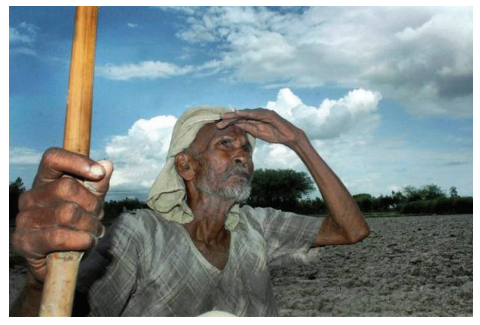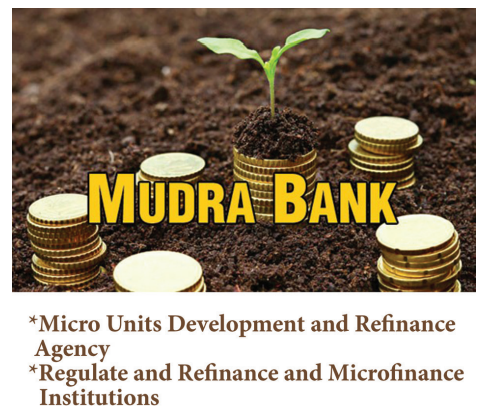Economics - Rural Indebtedness | 11th Economics : Chapter 10 : Rural Economics
Chapter: 11th Economics : Chapter 10 : Rural Economics
Rural Indebtedness
Rural
Indebtedness
Rural
indebtedness refers to the situation of the rural people unable to repay the
loan accumulated over a period. Existence of the rural indebtedness indicates
the weak financial infrastructure of our country, in reaching the needy
farmers, landless people and the agricultural labourers.

The
farmers borrow loan for various purposes like agricultural operations,
supporting the family in the lean season or purchase of equipments in the
recent years, expensesoncelebrations,liquorconsumption and medicines go on
increasing without any limit. Due to lower income, the villagers are unable to
repay the loans or pay the pending interest on the principal amount.
According to the Government of India’s Socio Economic and Caste
Census (SECC), 2015, around 73 per cent of households in India are rural. Of
these, 18.5 per cent are scheduled caste households and 11 per cent belong to
the scheduled tribe category.
The data
of the National Sample Survey Organisation (NSSO, 2002 -03) reveals that only
about 30 per cent of the poor borrowers get credit from the formal banks.
According to the All India Debt and Investment Survey (AIDIS) 2002, the share
of institutional credit has declined from 66.3 per cent in 1991 to 57.1 percent
in 2002, with a corresponding increase in informal channels of credit (RBI,
2006).
1. Features of Rural Indebtedness
Nearly
three fourth of rural families in the country are in debt. The amount of debt
is heavier in the case of small farmers. Cultivators are more indebted than the
non-cultivators. Most of the debts taken are short term and of unproductive
nature. The proportion of debts having higher rates of interest is relatively
high. Most of the villagers are indebted to private agencies particularly money
lenders.
2. Causes for Rural Indebtedness
The
causes for rural indebtedness may be summarized as below:
1.
Poverty
of Farmers: The vicious circle of poverty forces the farmers to
borrow for consumption, cultivation
and celebrations. Thus, poverty, debt and high rates of interest hold the farmer
in the grip of money lenders.
2.
Failure
of Monsoon: Frequent failure of monsoon is a curse to the
farmers and they have to suffer due
to the failure of nature. Therefore, farmers find it difficult to identify good
years to repay their debts.
3.
Litigation:
Due to
land disputes litigation in the court compels them to borrow heavily. Being uneducated and ignorant
they are caught in the litigation process and dry away their savings and
resources.
4.
Money
Lenders and High Rate of Interest: The rate of interest charged by
the local money lenders is very high
and the compounding of interest leads to perpetuate indebtedness of the farmer.
3. Measures to Remove Rural Indebtedness
Several
remedial measures have been introduced to reduce rural indebtedness. It includes
regulation of money lenders, development of rural banks, Regional Rural Banks
(RRBs), Micro Finance, formation of Self Help Groups (SHGs), Primary
Cooperative Banks and Land Development Banks, Crop Loan Schemes, Lead Bank
Schemes, Micro Units Development and Refinance Agency Bank (MUDRA), promotion
of subsidiary occupation, off farm employment opportunities, skill development
programmes and so on. However, the interest rate charged plus transaction cost
for poor people and Self-Help Groups are much higher as compared to that for
rich people. For instance, education loan is costlier than car loans.
Regional Rural Banks (RRBs)
Regional
Rural Banks came into existence based on the recommendation made by a working
group on rural banks appointed by the Government of India in 1975. RRBs are
recommended with a view to developing rural economy by providing credit and
other facilities particularly to the small and marginal farmers, agricultural
labourers, artisans and small entrepreneurs. RRBs are set up by the joint
efforts of the Centre and State Governments and commercial banks. At present,
there are 64 Regional Rural Banks in India. The RRBs confine their lending’s
only to the weaker sections and their lending rates are at par with the
prevailing rate of cooperative societies.
Micro Finance
Micro
finance, also known as micro credit, is a financial service that offers loans,
savings and insurance to entrepreneurs and small business owners who do not
have access to traditional sources of capital, like banks or investors. The
goal of micro financing is to provide individuals with money to invest in
themselves or their business. Microfinance is available through micro finance
institutions, which range from small nonprofit organizations to larger banks.
In India, Non Government Organizations (NGOs) play a pivotal role in the
development of micro finance service. Microfinance industry in India have grown
vastly in the last two decades. In 2009, the total number of micro finance
institutions in India was around 150 (Tripathi, 2014).
Self-Help Groups (SHGs)
Self Help
Groups are informal voluntary association of poor people, from the similar
socio-economic background, up to 20 women (average size is 14). They come
together for the purpose of solving their common problems through self-help and
mutual help. The SHG promotes small savings among its members. They save small
amounts Rs.10 to Rs.50 a month. The savings are kept with a bank. After saving
regularly for a minimum

In 2009 -10, the number of new SHGs having credit-linked with
banks was 1.59 million and a bank loan of Rs.14,453 Crores was disbursed to
these SHGs. Further, the number of SHGs which maintained savings accounts with
banks at the end of March 2010 was 6.95 million.
Based on their
performance, they are linked with the bank for further assistance under SHG
Bank Linked Programme (SBLP) started in 1992. It is a holistic programme of
micro-enterprises covering all aspects of self-employment, organization of the
rural poor into self Help groups and their capacity building, planning of
activity clusters, infrastructure build up, technology, credit and marketing.
Under NABARD SHG Linkage Programme, SHGs can borrow credit from
bank on showing their successful track record of regular repayments of their
borrowers. It has been successful in the states like Andhra Pradesh, Tamil
Nadu, Kerala and Karnataka during 2005-06. These States received approximately
60 per cent of SHG linkage credit (Taruna and Yadav, 2016).
The main
objective of this programme is to bring the beneficiaries above the poverty
line by providing income generating assets to them through bank credit and
government subsidy. NABARD estimates that there are 2.2 million SHGs in India,
representing 33 million members that have taken loans from banks under its
linkage program to date. The SHG Banking Linkage Programme since its beginning
has been predominant in certain states, showing spatial preferences especially
for the southern regions like Andhra Pradesh, Tamil Nadu, Kerala and Karnataka.
These SHGs have helped the Banks to accumulate more funds. Actually the banks
change higher interest for the SHGs than car owners.
Major Features of SHGs are
1.
SHG is generally an economically homogeneous group
formed through a process of self-selection based upon the affinity of its
members.
2.
Most SHGs are women’s groups with membership
ranging between 10 and 20.
3.
SHGs have well-defined rules and by-laws, hold
regular meetings and maintain records and savings and credit discipline.
4.
SHGs are self-managed institutions characterized by
participatory and collective decision making.
Micro Units Development and Refinance Agency Bank (MUDRA Bank)
It is a public sector financial institution which provides loans at low rates to micro-finance institutions and non- banking financial institutions which then provide credit to Micro, Small and Medium Enterprises (MSMEs). It was launched on 8th April 2015.

The principal objectives of the MUDRA Bank are the following
1.
Regulate the lender and the borrower of
microfinance and bring stability to the microfinance system .
2.
Extend finance and credit support to Microfinance
Institutions (MFI) and agencies that lend money to small businesses, retailers,
self-help groups and individuals.
3.
Register all MFIs and introduce a system of
performance rating and accreditation for the first time.
4.
Offer a Credit Guarantee scheme for providing
guarantees to loans being offered to micro businesses.
5.
Introduce appropriate technologies to assist in the
process of efficient lending, borrowing and monitoring of distributed capital.
Related Topics